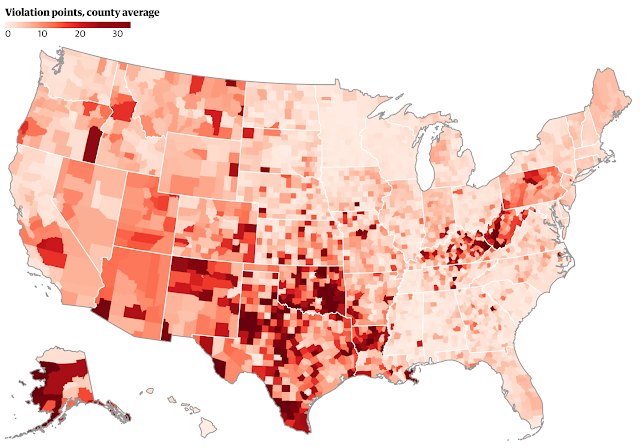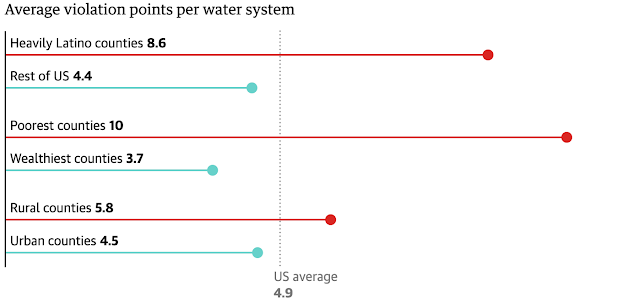 |
| Poor, rural and Latino-majority counties have some of the worst drinking water in the nation. Violation points assessed by the Environmental Protection Agency. (Map by The Guardian; click the image to enlarge it.) |
More than a week after a rash of winter weather left the South reeling, many towns are still trying to get clean water to residents. "For years, experts have warned of the need to upgrade aging and often-neglected waterworks. Now, after icy weather cracked the region's
water mains, froze equipment and left millions without service, it's clear just how much work needs to be done," Melinda Deslatte and Leah Willingham
report for
Phys.org. "The still-unfolding problems have exposed extensive vulnerabilities. Many water systems have decades-old pipes, now fragile and susceptible to breaking. ... Many systems in the South were not built with such low temperatures in mind. But with
climate change projected to bring more extreme weather, problems like those seen last week could return."
Millions of Americans have drinking water that doesn't meet federal health standards, especially in rural America and among the poor and racial and ethnic minorities, according to a six-month investigation of five years of data from the Environmental Protection Agency and other sources. "America’s worst public water systems – those that have accrued more than 15 'violation points' for breaking standards over five years – serve more than 25 million Americans, the research shows," Emily Holden, Caty Enders, Niko Kommenda and Vivian Ho report for The Guardian. "Rural counties have 28 percent more violation points than metropolitan ones" and "poorer counties have more than twice as many violation points as wealthy ones." Latino communities, many near farms with agricultural pollutants in the water, have some of the worst drinking water in the country.
 |
| Water systems in poor, Latino, and rural areas struggle to meet federal drinking water standards. (Chart by The Guardian) |


No comments:
Post a Comment